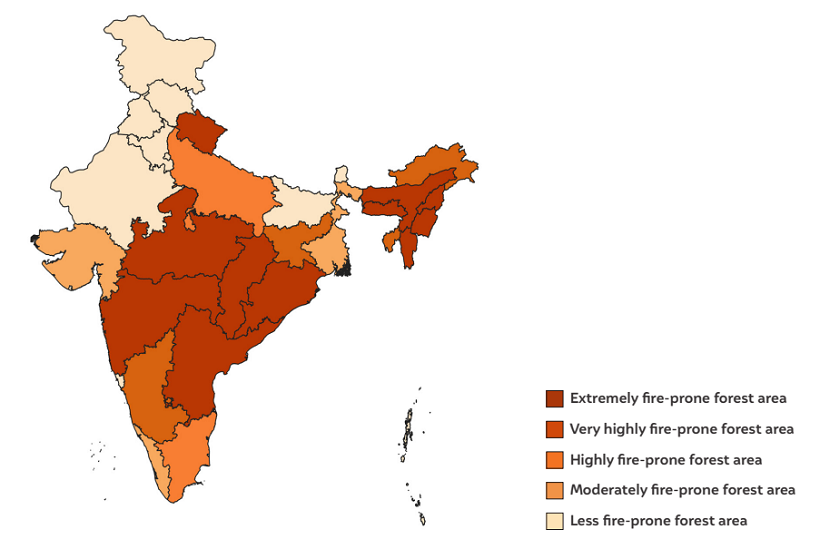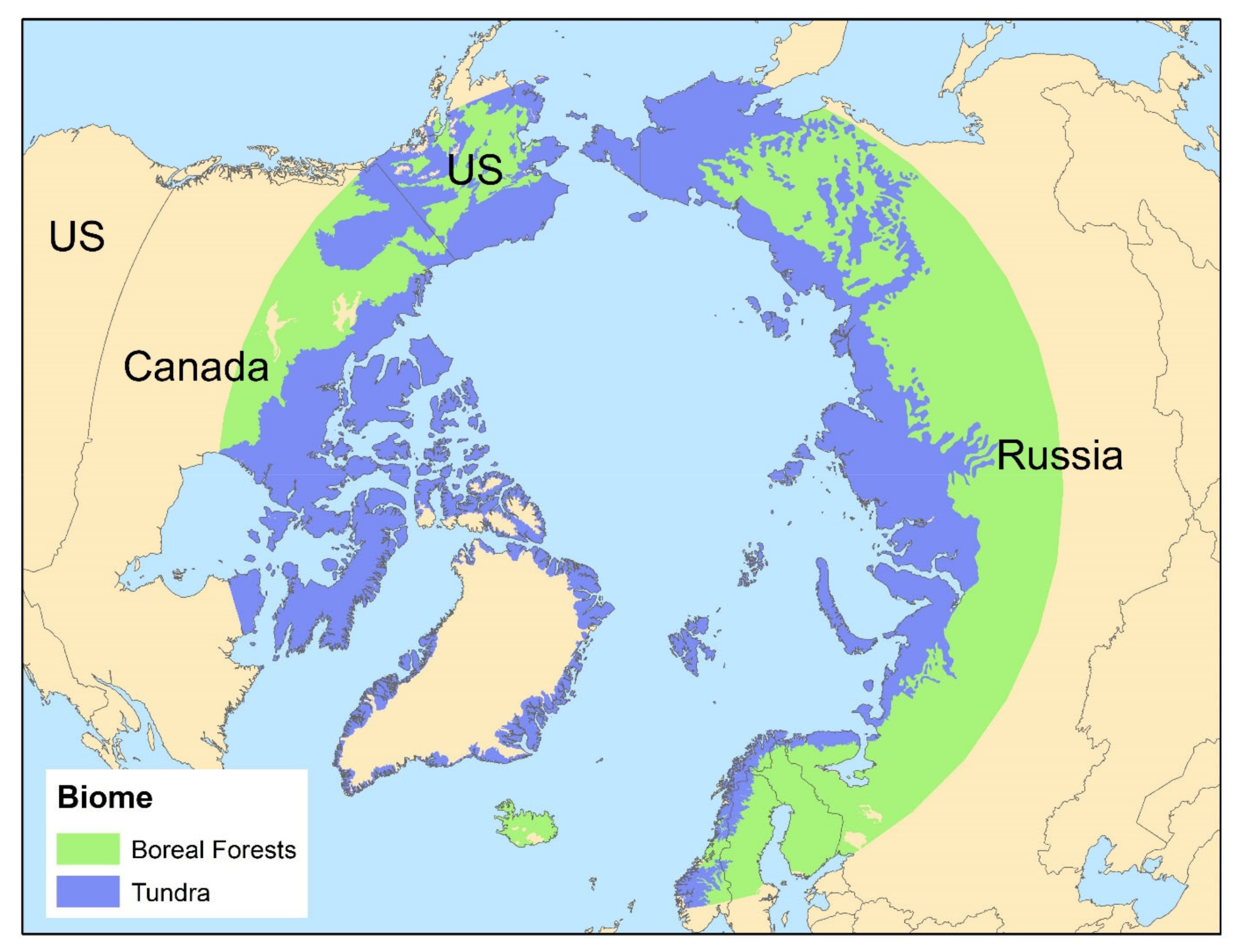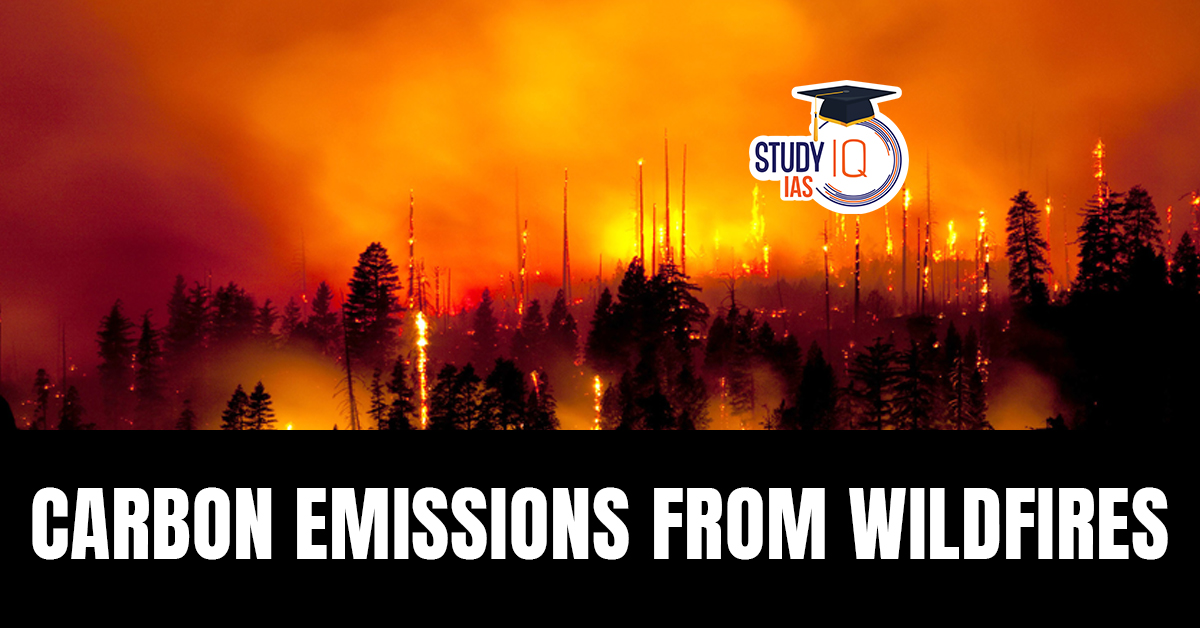Table of Contents
Context: Wildfires across the world released large quantities of carbon into the atmosphere.
More in News
- According to the European Union’s Copernicus Atmosphere Monitoring Service (CAMS), wildfires released approximately 800,000 tonnes of carbon into the atmosphere in January 2025 alone.
- This is 4x higher than carbon emissions from wildfires a decade ago.
- Also, Forest fires in India emit approximately 69 million tonnes of CO₂ annually.
Carbon Emissions from Wildfires
Wildfires are fast becoming a significant environmental issue, not just because of their devastating effect on ecosystems and human communities, but also due to their enormous contribution to the global carbon footprint.
As forests, grasslands, and other flora are consumed by wildfires, they emit enormous quantities of sequestered carbon dioxide (CO₂), methane (CH₄), and other greenhouse gases into the atmosphere. Global warming is further fueled by these emissions, poses health risks, and affects climate patterns.
- The burning of forests, peatlands, and grasslands contributes to significant atmospheric carbon levels.
- Forests typically act as carbon sinks, absorbing CO₂.
- When they burn, they release stored carbon and lose their carbon absorption capacity for years or decades.
Implications
- Contributes to global warming as they burn through the natural carbon reservoirs that have historically helped regulate the earth’s climate.
- Increases public health risks due to smoke and particulate matter.
- Affects biodiversity and soil quality.
| Feedback Loop Threat (Presented in NOAA’s 2024 Arctic Report Card) |
| Wildfires → Carbon release → Global warming → More fires→ Further carbon release → Stronger feedback loop. |
Hotspots for Wildfires in India
In India: As per India State of Forest Report 2023, Uttarakhand (alone witnessed 5,315 forest fires), Odisha, and Chhattisgarh reported the highest number of forest fires during the year.
- The report also noted a declining trend in the number of fire hotspots across the country — from 2.23 lakh in 2021–22 to 12 lakh in 2022–23, and further down to 2.03 lakh in 2023–24.

| Fact |
| Van Agni Geo-portal of Forest Survey of India acts as a single point of information on forest fire. |
Arctic Boreal Zone Reversing Trend
According to a 2024 study published in Nature Climate Change:
- Over 30% of the ABZ has shifted from absorbing carbon to releasing it, primarily due to increasingly frequent and intense wildfires.
- Researchers tracked carbon patterns across 200 sites (1990–2020), noting that while the ABZ remained a net sink from 2001–2020, one-third of the region has now become a net source of CO₂.

This reversal is driven by:
- Wildfires: Events like the Eastern Siberia fires (2003) and Timmins wildfire (Canada, 2012) released more carbon than the ABZ could absorb.
- Thawing permafrost: Warming temperatures lead to soil drying, vegetation changes, and the decomposition of organic matter, releasing stored carbon.


 Salt Pan Land Cleared for Dharavi Redeve...
Salt Pan Land Cleared for Dharavi Redeve...
 Kerala and Tamil Nadu Unite for Nilgiri ...
Kerala and Tamil Nadu Unite for Nilgiri ...
 Central Pollution Control Board (CPCB) R...
Central Pollution Control Board (CPCB) R...





















